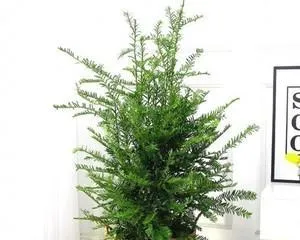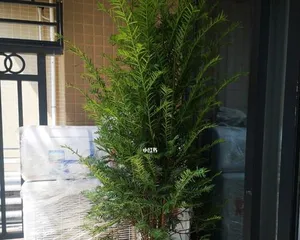Yew, an evergreen plant, is widely used in garden design and decoration. However, many people believe that only outdoor environments are suitable for the growth of yew trees. In fact, it can also be well-cared for indoors. Let's take a look at the indoor care methods and precautions for yew trees.

Environment and Temperature
Yew trees prefer a warm and humid environment. They should be placed in a well-ventilated location, away from direct sunlight and cold weather. The suitable temperature range is 20°C to 25°C, and the temperature should not be too high or too low.
Watering
Yew trees need sufficient water but do not like waterlogging. Water once a week, ensuring the soil is moist. In summer, pay attention to watering more, while in winter, control the amount of water.

Fertilizer
Fertilize once a month, mainly with organic fertilizer. But do not over-fertilize, as it may harm the yew tree.
Light
Yew trees need light but should not be exposed to direct sunlight. In an indoor environment, you can place it by a window, but avoid direct sunlight.
Pruning
Regular pruning of the leaves and branches of a yew tree can promote its growth and reproduction. When pruning, be careful not to damage the trunk and roots.

Soil
Yew trees need soft, well-draining soil. You can use peat soil or a mixture of leaf mold and sand to ensure the soil is moist and drains well.
Pest and Disease Control
Yew trees are susceptible to aphids and other pests. If pests or diseases are found, organic pesticides can be used for control. At the same time, pay attention to maintaining environmental hygiene to prevent the spread of diseases.
Transplanting
Yew trees can be transplanted regularly to maintain their healthy growth. When transplanting, be careful to keep the root system intact and avoid damage.
Watering
Do not water the yew tree too frequently; about once a week is sufficient. However, pay attention to keeping the soil moist, avoiding it from being too dry or too wet.
Fertilizer
Fertilize the yew tree once a month. Organic fertilizers can be used, but do not over-fertilize.
Pruning
Regular pruning of the leaves and branches of a yew tree can promote its growth and reproduction. When pruning, be careful not to damage the trunk and roots.
Pest and Disease Control
Yew trees are susceptible to aphids and other pests. If pests or diseases are found, organic pesticides can be used for control. At the same time, pay attention to maintaining environmental hygiene to prevent the spread of diseases.
Soil
Yew trees need soft, well-draining soil. You can use peat soil or a mixture of leaf mold and sand to ensure the soil is moist and drains well.
Environment and Temperature
Yew trees prefer a warm and humid environment. They should be placed in a well-ventilated location, away from direct sunlight and cold weather. The suitable temperature range is 20°C to 25°C, and the temperature should not be too high or too low.
Conclusion
Although yew trees are outdoor plants, they can also be well-cared for indoors. As long as you follow the appropriate requirements for temperature, water, fertilizer, and light, and regularly prune and transplant them, while strengthening pest and disease control, you can enjoy the beauty and vitality of a yew tree indoors.